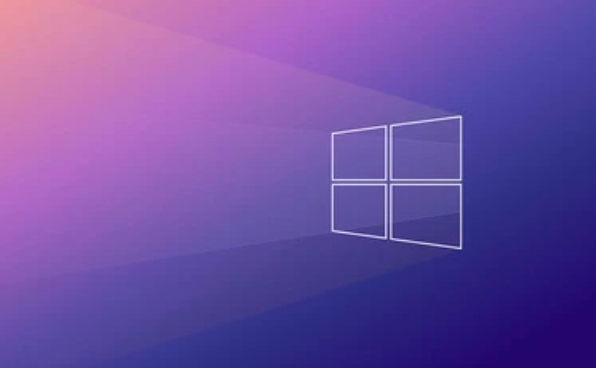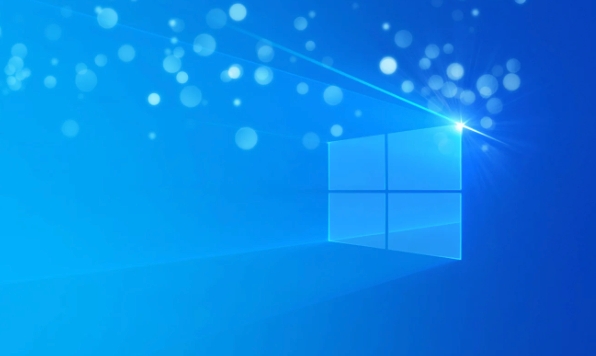The key to installing Windows to RAID arrays is to properly prepare the driver and set up the BIOS/RAID. 1. Download and prepare the corresponding model of RAID controller driver in advance to ensure that it matches the Windows version and system bit count; 2. Set SATA mode to RAID in the BIOS and create an array through the RAID tool to ensure that the status is normal; 3. Import the RAID driver through the "Load Drive" function during the installation process, so that the installer can identify the array; 4. After installation, the motherboard chipset driver needs to be installed, check the array status regularly, and use manufacturer tools to monitor performance to avoid replacing the hard disk at will. Do these steps and the RAID installation will be completed smoothly.

When installing Windows to the RAID array, the key is whether the preparations before the system installation and the BIOS/RAID settings are correct. Many people are prone to getting stuck at this step, especially in terms of driver recognition and array configuration. The following sections explain how to operate it in detail.

Get your RAID controller driver ready
The Windows Installer does not contain all RAID controller drivers by default, especially motherboard integrated or third-party RAID cards. If the driver is not loaded, the installer may not see the hard disk.

- Download the drivers for the corresponding motherboard or RAID card models in advance , which can generally be found on the support page of the official website of the motherboard manufacturer.
- Unzip the driver into folder format, prepare a USB flash drive, and import it using the "Load Driver" function during installation.
- Note that the driver should choose the right version of Windows (such as Win10 22H2 or Win11), and the 32-bit/64-bit must also be matched.
Properly set up BIOS and RAID arrays
This step determines whether Windows can recognize the disk.
- Enter the BIOS (usually press Delete, F2 or F12 when powering on), find the storage related settings, and set SATA mode to RAID.
- Create a RAID array using the RAID configuration tool (some motherboards will prompt to press Ctrl I or other key combinations when they are powered on) such as RAID 0, RAID 1, or RAID 5.
- Make sure the array state is "Online" or "Ready", otherwise the installation process may fail.
- After creation is completed, restart and start the installer from the USB drive.
Loading the RAID driver during installation
Many users have problems here because they skipped the step of manually loading the driver.

- Insert the installation media and enter the installation interface after starting.
- When selecting the installation location, you may see that there is no disk option. At this time, click the "Load Driver" button under "Drive Options (Advanced)".
- Insert the USB drive you prepared before, browse and select the corresponding RAID driver folder, and click Next.
- If the driver is compatible and correct, you should see the RAID array you just created appear.
- Next, you can partition, format and start installing the system normally.
Things to note after installation
After the system is installed, everything does not mean that everything is good. There are still some details to pay attention to in the RAID array.
- After installing the system, remember to install the motherboard chipset driver to ensure the stable operation of the RAID controller.
- If you are using RAID 1 or redundant arrays, it is recommended to check the array status regularly to avoid data loss caused by single hard disk failure.
- Array status and performance can be monitored through management tools provided by motherboard manufacturers (such as Intel RST, AMD StoreMI).
- It is not recommended to frequently replace hard drives or unplug hot-swap disks unless you know what you are doing.
Basically that's it. As long as the preliminary preparation is sufficient, it is not difficult to install the RAID system, but it is indeed a few more critical operations than ordinary single disk installation.
The above is the detailed content of How to install Windows on a RAID array. For more information, please follow other related articles on the PHP Chinese website!

Hot AI Tools

Undress AI Tool
Undress images for free

Undresser.AI Undress
AI-powered app for creating realistic nude photos

AI Clothes Remover
Online AI tool for removing clothes from photos.

Clothoff.io
AI clothes remover

Video Face Swap
Swap faces in any video effortlessly with our completely free AI face swap tool!

Hot Article

Hot Tools

Notepad++7.3.1
Easy-to-use and free code editor

SublimeText3 Chinese version
Chinese version, very easy to use

Zend Studio 13.0.1
Powerful PHP integrated development environment

Dreamweaver CS6
Visual web development tools

SublimeText3 Mac version
God-level code editing software (SublimeText3)
 How to reset the TCP/IP stack in Windows
Aug 02, 2025 pm 01:25 PM
How to reset the TCP/IP stack in Windows
Aug 02, 2025 pm 01:25 PM
ToresolvenetworkconnectivityissuesinWindows,resettheTCP/IPstackbyfirstopeningCommandPromptasAdministrator,thenrunningthecommandnetshintipreset,andfinallyrestartingyourcomputertoapplychanges;ifissuespersist,optionallyrunnetshwinsockresetandrebootagain
 What are the main pros and cons of Linux vs. Windows?
Aug 03, 2025 am 02:56 AM
What are the main pros and cons of Linux vs. Windows?
Aug 03, 2025 am 02:56 AM
Linux is suitable for old hardware, has high security and is customizable, but has weak software compatibility; Windows software is rich and easy to use, but has high resource utilization. 1. In terms of performance, Linux is lightweight and efficient, suitable for old devices; Windows has high hardware requirements. 2. In terms of software, Windows has wider compatibility, especially professional tools and games; Linux needs to use tools to run some software. 3. In terms of security, Linux permission management is stricter and updates are convenient; although Windows is protected, it is still vulnerable to attacks. 4. In terms of difficulty of use, the Linux learning curve is steep; Windows operation is intuitive. Choose according to requirements: choose Linux with performance and security, and choose Windows with compatibility and ease of use.
 How to enable Hyper-V in Windows
Aug 04, 2025 am 12:53 AM
How to enable Hyper-V in Windows
Aug 04, 2025 am 12:53 AM
Hyper-VcanbeenabledonWindowsPro,Enterprise,orEducationeditionsbymeetingsystemrequirementsincluding64-bitCPUwithSLAT,VMMonitorModeExtension,BIOS/UEFIvirtualizationenabled,andatleast4GBRAM.2.EnableHyper-VviaWindowsFeaturesbyopeningoptionalfeatures,chec
 How to solve touchpad not working issues on Windows?
Aug 05, 2025 am 09:21 AM
How to solve touchpad not working issues on Windows?
Aug 05, 2025 am 09:21 AM
Checkifthetouchpadisdisabledbyusingthefunctionkey(Fn F6/F9/F12),adedicatedtogglebutton,orensuringit’sturnedoninSettings>Devices>Touchpad,andunplugexternalmice.2.UpdateorreinstallthetouchpaddriverviaDeviceManagerbyselectingUpdatedriverorUninstal
 How to change screen resolution in Windows
Aug 02, 2025 pm 03:08 PM
How to change screen resolution in Windows
Aug 02, 2025 pm 03:08 PM
Right-clickthedesktopandselect"Displaysettings"toopenthedisplayoptions.2.Underthe"Display"section,clickthe"Displayresolution"dropdownandchoosearesolution,preferablytherecommendedoneforbestimagequality.3.Confirmthechanges
 How to troubleshoot a failed Windows installation
Aug 02, 2025 pm 12:53 PM
How to troubleshoot a failed Windows installation
Aug 02, 2025 pm 12:53 PM
VerifytheWindowsISOisfromMicrosoftandrecreatethebootableUSBusingtheMediaCreationToolorRufuswithcorrectsettings;2.Ensurehardwaremeetsrequirements,testRAMandstoragehealth,anddisconnectunnecessaryperipherals;3.ConfirmBIOS/UEFIsettingsmatchtheinstallatio
 How to roll back a driver update in Windows
Aug 03, 2025 am 11:10 AM
How to roll back a driver update in Windows
Aug 03, 2025 am 11:10 AM
OpenDeviceManagerbypressingWin XandselectingitorsearchingintheStartmenu.2.Locatetheproblematicdevice—suchasDisplayadapters,Soundvideoandgamecontrollers,Networkadapters,orinputdevices—right-clickitandselectProperties.3.GototheDrivertabandclick“RollBac
 How to change the processor affinity for an application permanently in Windows
Aug 03, 2025 am 12:37 AM
How to change the processor affinity for an application permanently in Windows
Aug 03, 2025 am 12:37 AM
Windowsdoesnotnativelysupportpermanentlysavingprocessoraffinityforapplications,butyoucanachievepersistentaffinityusingscriptsorthird-partytools.1.ProcessoraffinitybindsaprocesstospecificCPUcores,improvingperformanceorthermalmanagement,thoughWindowsre






